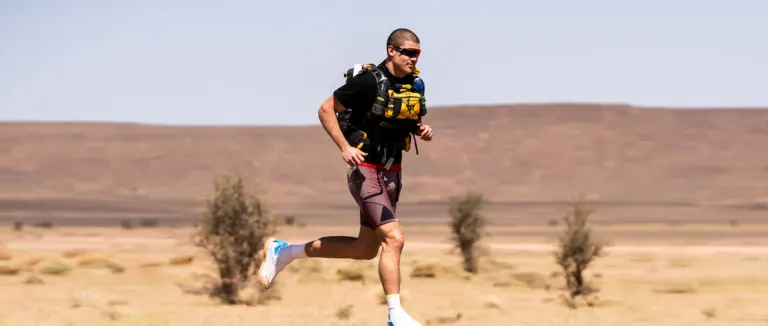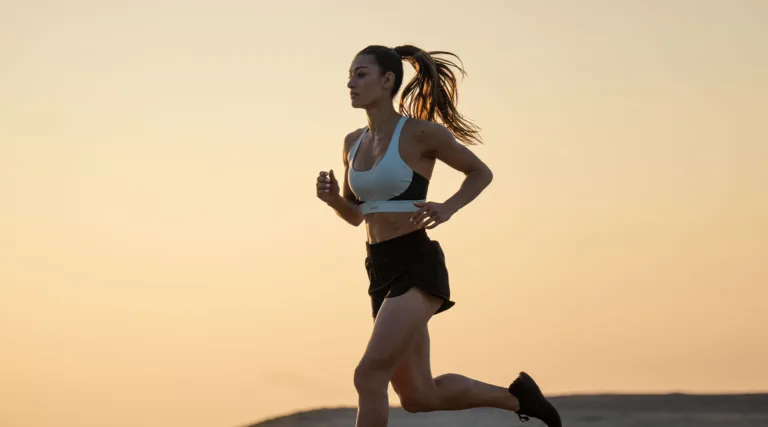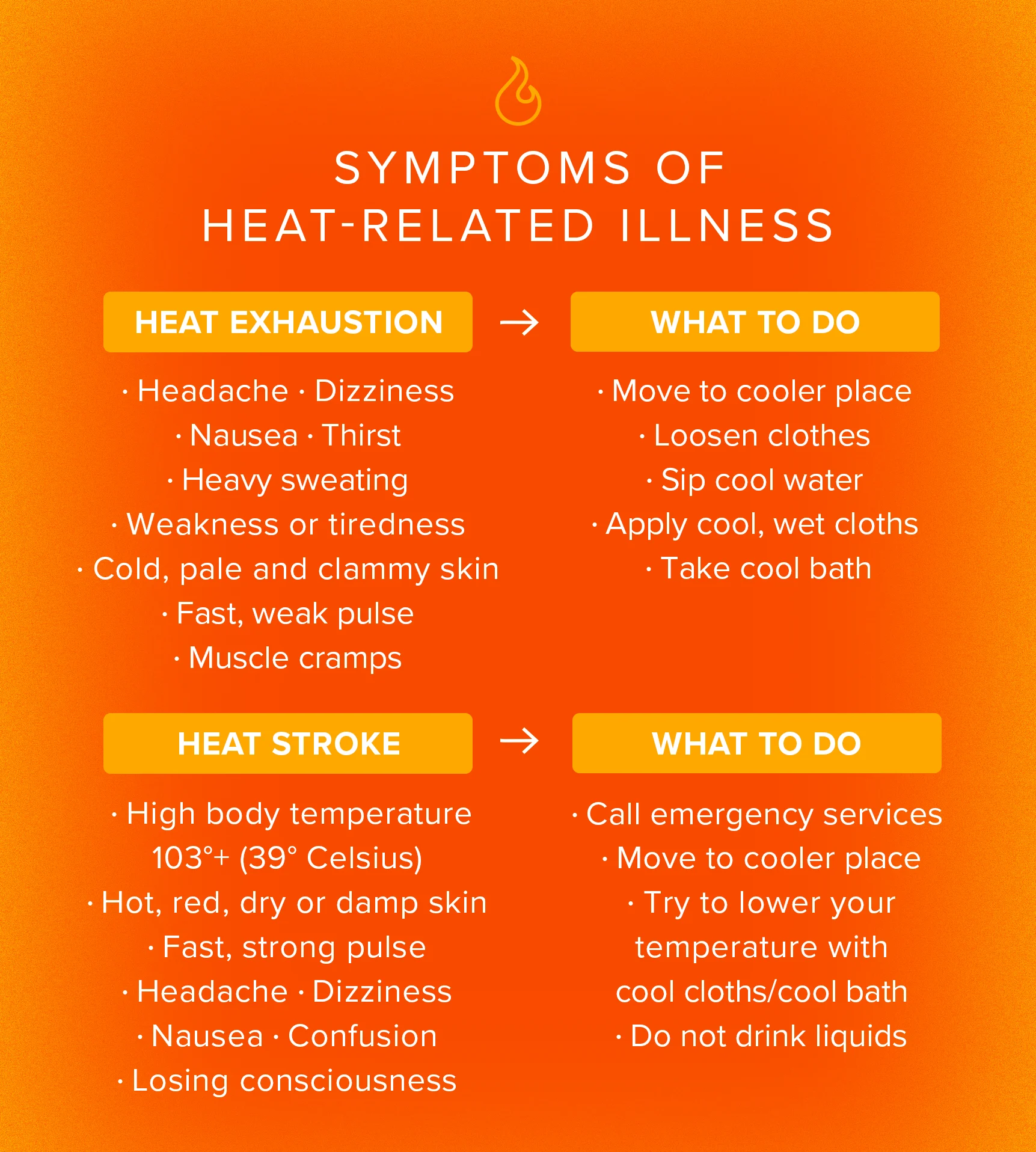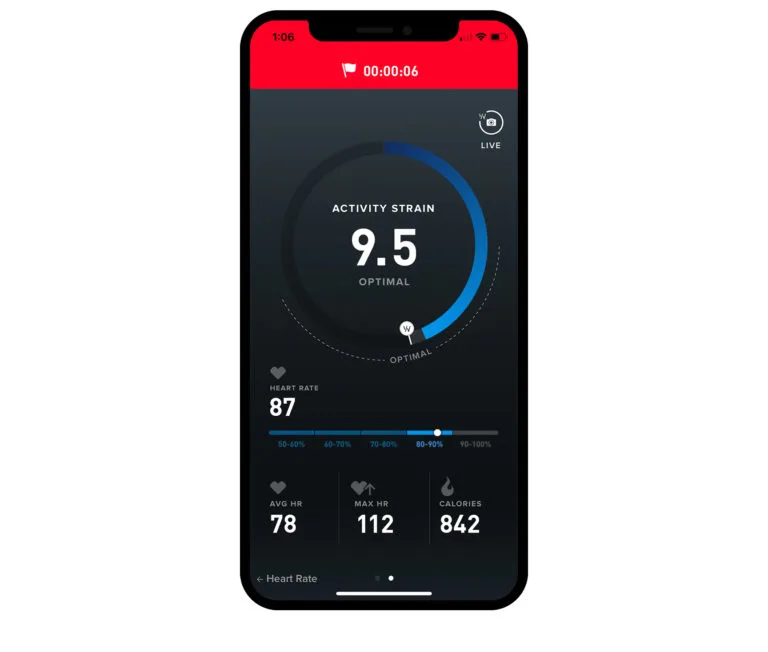Topics
- Article
- Health & Wellness
- Running
8 Tips for Running in Hot Weather

Summer heat doesn’t have to stop you from running. Choose the right time of day, set your pace and make sure you’re hydrated.
Long summer days seem to be made for being outside, if it weren’t so hot. That extra daylight before and after work means there is more time to get outside when it’s cooler. Early mornings and long evenings are great times for getting out on the track, road or trail to get in your miles. While studies have shown that training in hot weather can increase cardiovascular fitness, build resilience, and improve rate of perceived exertion, there are dangers involved in running on hot days if precautions aren’t taken. Here are some tips to stay safe and get the most out of summer running.
8 Tips for Running in Hot Weather
Here are some tips to stay safe and get the most out of summer running.
1. Acclimate to the Heat

Acclimating to 130 degree temperatures was vital to Will Goodge during the Marathon des Sables, the 7-day ultra marathon across the Sahara Desert.
It can take a week or two to acclimate to hot weather. Acclimation can be done by spending an hour or two outdoors every day you're going to workout. That means making adjustments so you’re not doing long or high-intensity workouts during the heat of the day. Running in the heat can be dangerous if you’re not used to it. Heat exhaustion and heat stroke are serious conditions that result in your body overheating. Pushing to the point of heat exhaustion will hurt rather than help your heat tolerance according to the CDC. READ MORE: Strain of Running 144 Miles In the Sahara Desert
2. Slow Your Pace
For most runners, perceived exertion increases and pace slows when the temperature rises above 59 degrees (15 degrees Celsius). This study found that runners averaging a 5:45-minute per mile pace or faster slow approximately 1 second per mile for every 1 degree Celsius (1.8 degree Fahrenheit) above 15 degrees. While slower runners (7:25 to 10-minute pace) slowed 4-4.5 seconds per mile for every degree Celsius above 15 degrees C. Male runners are more affected by high heat than female runners in general. Adjust your pace further if you find your heart rate is too high or your pace becomes uncomfortable.
3. Understand the Heat Index
The heat index, also called the apparent temperature, combines humidity with air temperature to gauge what the temperature feels like to humans. For example, when humidity is 70% a 90-degree (32 degrees Celsius) day can feel like 105 degrees (40 degrees Celsius). High humidity prevents your sweat from evaporating, and you can overheat quickly in these conditions.
4. Dress for the Weather

Wear comfortable, loose-fitting shorts made from breathable fabric in hot weather.
Wear light-colored, loose-fitting clothing. This is not the time to wear your compression shirt or sweatpants. Loose tops and shorts will help your body breathe and cool itself. Tight clothing restricts that ability while dark colors absorb the sun’s light. The type of cloth is important, too. Cotton soaks up sweat and doesn’t allow it to evaporate quickly when you’re active. Synthetics wick away perspiration and dry quickly allowing you to stay cool. Clothing that has vents or mesh can also help you to stay cool.
5. Protect Your Skin
During the summer, the sun’s ultraviolet rays are at their strongest between 10 am and 4 pm. Avoid exposure to direct sunlight during those hours, or take precautions to protect your skin. Wear a light-colored hat or visor to block the sun’s rays and keep sweat from dripping into your eyes, and wear sunglasses to protect your eyes. Some high-tech clothing can block ultraviolet rays, but you should also wear sunblock with a rating of at least SPF 30 and reapply every two hours and after sweating. Sunburns aren’t just painful; they also increase your risk for melanoma.
6. Prehydrate, Carry Water, and Rehydrate
You can lose up to 12 ounces (350 ml) of fluid and electrolytes such as sodium, potassium and magnesium in 20 minutes while running in hot weather. Even losing a small amount 1.5% of your body’s water can cause symptoms such as headache or even heatstroke. When you’re dehydrated your total blood volume decreases, reducing blood flow to your skin and muscles. This can increase your heart rate, and impact your cognitive functions. Anticipate your water needs by prehydrating. Drink about 2 cups (500 ml) of water or a sports beverage two hours before you plan to run and 6 to 8 ounces (175-250 ml) about 15 minutes before you begin. You want to drink enough so you prevent excessive dehydration, but not so much that you need to stop during your run to find a bathroom. Most runners don’t drink enough during exercise, but if your run lasts more than an hour you should consider carrying a water bottle or a hydration belt, vest, or backpack. Rehydrate after your run with a sports drink or water to replace your electrolyte deficit, especially if you run for more than an hour, to boost recovery and stay safe. An analysis of WHOOP data shows that proper hydration is one of the best things our members do to improve their daily recovery.
7. Run in Early Mornings or Late Evenings
Avoid the heat of the day, dehydration, and sunburn by running early in the day or in the evening. If you must run at midday, pick a route with some shade. Morning people who rise with the sun can usually avoid the heat, while evening runs can help wind down the day. Your muscles are usually looser than in the mornings and you’re less likely to injure yourself.
8. Know the Signs of Heat Exhaustion and Heat Stroke
Heat exhaustion and heat stroke are serious medical conditions that happen when you are overheated, dehydrated, or dressed too warmly. Below is a chart of the differences between heat exhaustion and the more serious heat stroke.

Signs of heat exhaustion and heat stroke, and what to do in each situation.
Track Your Running Heart Rate with WHOOP
Wearing a heart rate monitor while you run is the easiest way to track your HR and make sure you’re not overexerting yourself in hot weather conditions. The WHOOP Strain Target provides your live heart rate and gives you recommendations for daily exertion. When you begin an activity, it shows your strain building in real time towards the suggested goal and enables you to better understand if you should continue to push yourself, or take a rest in the shade, making informed decisions in the moment.
